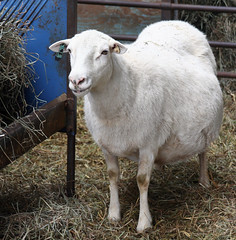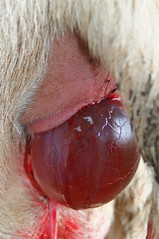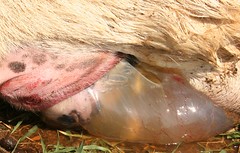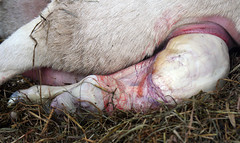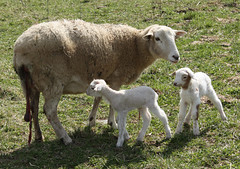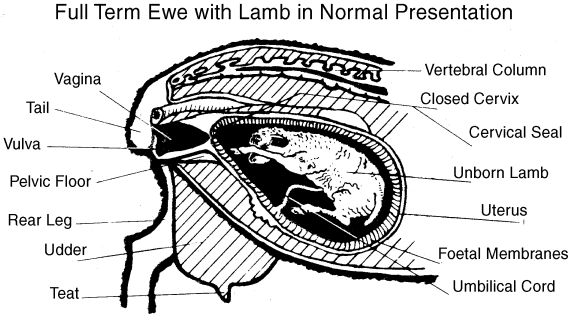Monday, January 27, 2014
Exitement in the maternity ward?
No, not yet, they all look rather sleepy or just trying to find a comfortable position.
School buses cancelled for some in our area
-40 C is the cut off for School buses in our school division.
Two buses to the west of us cancelled this morning.
Current Weather
Updated on Mon Jan 27 8:05 AM
Clear
-32°C
Feels like -39
NW 7km/h
Wind
08:54
Sunrise
17:45
Sunset
Mon. Morning
Sunny
-30°C
Feels like -38
P.O.P: 10%
Wind NW 10 km/h
Wind gust -
Humidity 65%
Mon. Afternoon
Sunny
-24°C
Feels like -32
P.O.P: 10%
Wind NW 10 km/h
Wind gust -
Humidity 63%
Mon. Evening
Clear
-26°C
Feels like -35
P.O.P: 10%
Wind W 10 km/h
Wind gust -
Humidity 69%
Mon. Overnight
Clear
-26°C
Feels like -34
P.O.P: 10%
Wind S 5 km/h
Wind gust -
Humidity 57%
Saturday, January 25, 2014
Moving sheep into the maternity ward
Today we had another look at the sheep that we think are the closest to giving birth. It doesn't quite match our paperwork, but the signs are all there.
The following images and text can be found in its entirety at
http://www.sheep101.info/201/lambingprocess.html
A link at the right side will take you to their main site http://www.sheep101.info/201/index.html
The following images and text can be found in its entirety at
http://www.sheep101.info/201/lambingprocess.html
A link at the right side will take you to their main site http://www.sheep101.info/201/index.html
 Backwards 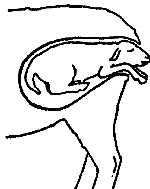 Elbow lock  One leg back 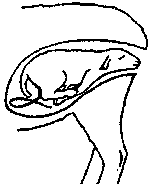 Both legs back 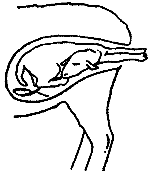 Head back  Breech 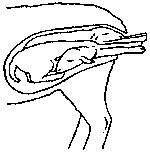 Four front legs 
Front and back Presentation images courtesy of Ontario Ministry of Agriculture & Food Economy © Queen's Printer for Ontario, 1999. |
| ||||
Friday, January 24, 2014
Look what I found
Look what I found
no it's not baby lambs!
It's the fact that my tractor tires are only 1/2 full or 1/2 empty of fluid.
The weather conditions in my barn conspired to illustrate this fact.
As the temperature was below -30C , the fluid cooled to that temperature. When the air warmed up, the part or the tire above the fluid also warmed up and the lower 1/2 with the fluid stayed cold.
The frost line is very visible.
no it's not baby lambs!
It's the fact that my tractor tires are only 1/2 full or 1/2 empty of fluid.
The weather conditions in my barn conspired to illustrate this fact.
As the temperature was below -30C , the fluid cooled to that temperature. When the air warmed up, the part or the tire above the fluid also warmed up and the lower 1/2 with the fluid stayed cold.
The frost line is very visible.
Wednesday, January 22, 2014
Lambing to start any day now
Here is a spread sheet with our lambing data.
Notice that we can expect lambs to be born any time after the 23 of January.
Notice that we can expect lambs to be born any time after the 23 of January.
Creep Feed Area
This is the beginning of the construction of the Creep Feed Area
The newborn lambs can start to consume creep feed as soon as 7 days old.
Lambs don't eat much at first, but consumption increases with each day. This method of feeding is an advantage to the ewe that has 3 or 4 lambs as she would not have enough milk for all the lambs without the supplemental nutrition of the creep feed.
The idea is to restrict the access of the ewe based on her size. In this photo, you can see the mid level 2x4 horizontal board which can be raised or lowered to allow the lambs, and restrict the much larger ewes.
The newborn lambs can start to consume creep feed as soon as 7 days old.
Lambs don't eat much at first, but consumption increases with each day. This method of feeding is an advantage to the ewe that has 3 or 4 lambs as she would not have enough milk for all the lambs without the supplemental nutrition of the creep feed.
The idea is to restrict the access of the ewe based on her size. In this photo, you can see the mid level 2x4 horizontal board which can be raised or lowered to allow the lambs, and restrict the much larger ewes.
Thursday, January 16, 2014
Rolly Bateman
This post is for my Mom who enjoys reading the Western Producer.
She can look at this site and see the link below.
The link is from November 28, 2013 and is about Rolly Bateman, Agribition, and the Sheep that now reside at Living Sky Ranch
http://issuu.com/westernproducer/docs/131127201229-355e5391b49b42d78b96752e588b7321/79?e=3157973/5803020
Wednesday, January 15, 2014
Another New Sheep Bale Feeder
Yes another feeder for the sheep.
This give me more flexibility to move sheep around the corral system.
This is prior to installation of the netting.
And this is after installing the netting onto the rollers.
Tuesday, January 14, 2014
Countdown to day 10
After I had moved the Bale Feeder inside the barn, I placed a new alfalfa bale on January 3rd.
The morning of the 4th was the first time the sheep had access to this bale.
The morning of the 4th was the first time the sheep had access to this bale.
On the morning of the 12th, here is whats remains.
On the morning of the 13th,this is what remains.
The morning of the 14th or day 10
Looks like we will get 11 or 12 days/bale
That is great as the weather forecast for tomorrow is on the plus side .
I feel sorry for my tractor when I start it at -20C
Saturday, January 11, 2014
New Link
Thursday, January 9, 2014
feed costs
It is now day 38 of our sheep venture, and the sheep have consumed a total of 4 large round bales of alfalfa.
Each bale weighs approximatly 1,500 lbs.
4 x 1,500 lbs. = 6,000 lbs. total
Divided by 26 sheep = 230 lbs. / sheep
divided by 38 days 230/38 = 6 lbs./sheep/day
I estimate the amount of feed wasted (before I built the new feeder) to be 30-40%.
Waste after the feeder was built to be 5%
So on average our wastage is 20%, therefore the sheep are eating 5lbs. /day of quality alfalfa.
Our alfalfa cost is 6 cents / lbs.
5lbs. x 6 cents = $0.30 cdn. /sheep/day
The flock of sheep are also eating 8kg of whole oats every day
8kg = $3.66/day
$3.66/ 26 sheep = $0.14 /sheep/day
Our total feed cost is $0.44 /day/sheep
8,000g / 26 sheep = 310 grams oats/sheep/day
Wednesday, January 8, 2014
Snow Blower In Use
If you don't stay on top of the cleanup, you might regret it when you get stuck in your yard.
Tuesday, January 7, 2014
winter clothes
After seeing the "wind chill" video on this blog the question comes up, "How do you survive in that climate"?
The answer for going outside is to dress in multiple layers of clothes.
See this video for clothing for nasty weather.
and the wind chill video again.
Monday, January 6, 2014
WIND CHILL WARNING !!!!!
This site has viewers from places where the concept of wind chill is unknown.
| This post is for the followers from | |
| New Zealand | |
| Malaysia | |
India
| |
South Korea
| |
Philippines
| |
Saudi Arabia
| |
The first and most important thing about our weather in January is that "it is a MINUS or NEGATIVE sign in front of the temperature number. -32 C"
Most of you know what + 32 C is, as it is what you experience in your climate.
Water will freeze at 0 C and then you reduce the temperature another 32 C from 0 C to get to - 32 C.
This is a difference of 64 degrees C.
|
-32°C
Feels like -47 C
NW 25km/h
Wind
The next important fact about our weather is the concept of wind chill.
Notice in the little caption above that it says"feels like -47 C".
You may be wondering"how did they know that" or "what do they mean by that"?
Wind chill is "the rate of cooling, not just a temperature".
For example,
"Why do you blow on a bowl of hot soup"?
To cool it faster.
The soup has energy in the form of heat, and by blowing on it , you are accelerating the rate that the heat energy is mixed into the air.
Now imagine that you are "the bowl of soup". Your body has energy in the form of heat. The wind blowing across your body is removing the heat energy of your body at an accelerated rate. That is why it feels even colder than the temperature as read on the thermometer.
Have some fun and play around on the wind chill calculator on this link.
http://www.ec.gc.ca/meteo-weather/default.asp?lang=En&n=0F42F92D-1
and a greater explenation can be found at
http://en.wikipedia.org/wiki/Wind_chill
The next important fact about our weather is the concept of wind chill.
Notice in the little caption above that it says"feels like -47 C".
You may be wondering"how did they know that" or "what do they mean by that"?
Wind chill is "the rate of cooling, not just a temperature".
For example,
"Why do you blow on a bowl of hot soup"?
To cool it faster.
The soup has energy in the form of heat, and by blowing on it , you are accelerating the rate that the heat energy is mixed into the air.
Now imagine that you are "the bowl of soup". Your body has energy in the form of heat. The wind blowing across your body is removing the heat energy of your body at an accelerated rate. That is why it feels even colder than the temperature as read on the thermometer.
Have some fun and play around on the wind chill calculator on this link.
http://www.ec.gc.ca/meteo-weather/default.asp?lang=En&n=0F42F92D-1
and a greater explenation can be found at
http://en.wikipedia.org/wiki/Wind_chill
Sunday, January 5, 2014
feeding inside barn
-33°C
Feels like -48
NW 24km/h
Wind
09:14
Sunrise
17:10
Sunset
Now they spend much more time in the barn.
They still get water and minerals outside in the corrals
Saturday, January 4, 2014
feeder moved inside barn
I have moved the bale feeder inside to keep the sheep in the barn and out of the cold. My concern is for the newborn lambs born wet in cold weather.
Friday, January 3, 2014
After more than a month of watching the habits of the sheep, I am concerned that our sheep are not concerned about the cold temperatures we experienced in December.
This is bad news for the new lambs that will be born in late January and February.
Our sheep have no interest in the shelter of our barn.
The sheep use the doorway as a scratching post and block the other sheep from entering the barn.
Its time to change the routine and feed them in the barn, and only give them access to a much smaller corral.
This will also allow us to separate those early mothers from the later birthing ewes.
This is bad news for the new lambs that will be born in late January and February.
Our sheep have no interest in the shelter of our barn.
The sheep use the doorway as a scratching post and block the other sheep from entering the barn.
Its time to change the routine and feed them in the barn, and only give them access to a much smaller corral.
This will also allow us to separate those early mothers from the later birthing ewes.
Subscribe to:
Posts (Atom)

